Biosphere Reserve
About
Biosphere Reserve
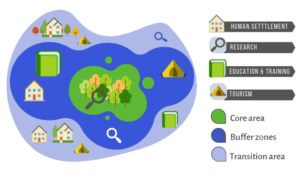
A Biosphere Reserve is a mechanism to promote the welfare of both humans and nature. It functions as a “learning center for sustainable development” and should be a reflection of its biogeographic region and of significance for biodiversity.
UNESCO’s Programme on Man and the Biosphere (MAB) internationally recognizes Biosphere Reserves as areas comprising of terrestrial and/or coastal/marine ecosystems or a combination of both.
Biosphere Reserves are established to promote and demonstrate a harmonious relationship between humans and the natural world. Biosphere reserves are designated by the International Coordinating Council of the MAB Programme, at the request of the respective State.
While individual Biosphere Reserve remain under the sovereign jurisdiction of the State where it is located, collectively, they form a World Network where participation by States in this network is voluntary.
Biosphere Reserves include the participation of local communities and all interested stakeholders in the planning and management process. These reserves integrate three main “functions”:
Conservation – conserves biodiversity and ecosystem.
Economic development – socio-culturally and environmentally sustainable.
Logistic support – sustaining development through research, monitoring, education, and training.
These three functions are pursued through the Biosphere Reserves’ three distinct zones:
Core Area: the innermost region that is strictly protected and regulated under the Wildlife Protection Act. Human activities are strictly prohibited here to conserve the unique rich diversity of landscapes, ecosystems, species, and genetic variation.
Buffer Zone: an intermediate zone lies between the core and transition zone. Minimal human interference is allowed in the buffer zone while only allowing activities compatible with sound ecological practices that can foster scientific research, monitoring, training, and education.
Transition Area: the outermost area where the living communities of the transition zone are allowed to use resources sustainably, such as fisheries, farming, and forestry.
Malaysia has several Biosphere Reserves that have been established under the UNESCO Man and the Biosphere (MAB) Programme.
These include the Crocker Range Biosphere Reserve, the Tasik Chini Biosphere Reserve, and Penang Hill Biosphere Reserve (PHBR), each with its unique ecological features and conservation challenges.
Tasik Chini Biosphere Reserve, Malaysia (Designation date: 2009)
The Tasik Chini Biosphere Reserve in Pahang covers 7,700 hectares and features a freshwater lake, forested areas, and a diverse range of flora and fauna, including several endangered species.
Crocker Range Biosphere Reserve, Malaysia (Designation date: 2014)
Located in Sabah, this biosphere reserve covers an area of 139,919 hectares and includes the Crocker Range Mountain range and surrounding forested areas. It is home to several endemic species of flora and fauna and is an important area for the conservation of biodiversity.
Penang Hill Biosphere Reserve (PHBR) (Designation date: 2021)
Penang Hill Biosphere Reserve (PHBR) is the newest biosphere reserve designated by UNESCO on Penang Island. The biosphere reserve covers an area of approximately 12,482 hectares and includes the Penang Hill Rainforest and other forested areas on the island. It is home to a rich diversity of flora and fauna and is an important area for biodiversity conservation.
About
UNESCO
Biosphere Reserve
A UNESCO Biosphere Reserve is a mechanism to promote the welfare of both humans and nature. It functions as “learning places for sustainable development” to foster greater understanding and ways to manage the interaction between social and ecological systems.
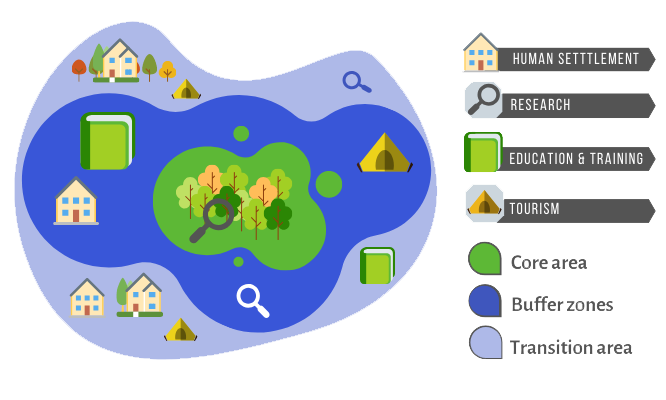
The UNESCO Man and the Biosphere (MAB) Programme internationally recognises Biosphere Reserves as areas comprising of terrestrial and coastal/marine ecosystems, or a combination thereof.
Biosphere Reserves are established to promote and demonstrate a harmonious relationship between humans and the natural world. They are designated by the International Coordinating Council of the MAB Programme, at the request of the respective State.
While individual Biosphere Reserves remain under the sovereign jurisdiction of the State where it is located, collectively, they form a World Network where participation by States in this network is voluntary.
Biosphere Reserves include the participation of local communities and all interested stakeholders in the planning and management process. These reserves integrate three main “functions”:
Conservation: Conserving and preserving biodiversity and cultural diversity.
Economic development: Socio-culturally and environmentally sustainability.
Logistic support: Sustaining development through research, monitoring, education, and training.
These three functions are pursued through the Biosphere Reserves’ three distinct zones:
Core area: the innermost region that is strictly protected and regulated. Human activities are strictly prohibited here to conserve the unique rich diversity of landscapes, ecosystems, species, and genetic variation.
Buffer zone: an intermediate zone lies between the core and transition zone. Minimal human interference is allowed in the buffer zone, allowing only activities compatible with sound ecological practices that can foster scientific research, monitoring, training, and education.
Transition area: the outermost area where the living communities of the transition zone are allowed to use resources sustainably, such as fisheries, farming, and forestry.
Malaysia has three Biosphere Reserves that have been established under the UNESCO Man and the Biosphere (MAB) Programme.
These include the Tasik Chini Biosphere Reserve, the Crocker Range Biosphere Reserve, and Penang Hill Biosphere Reserve (PHBR), each with its unique ecological features and conservation challenges.
Tasik Chini Biosphere Reserve, Malaysia (Designated year: 2009)
The Tasik Chini Biosphere Reserve in Pahang covers 6922.97 hectares and features a freshwater lake, forested areas, and a diverse range of flora and fauna, including several endangered species.
Crocker Range Biosphere Reserve, Malaysia (Designated year: 2014)
Located in Sabah, this biosphere reserve covers an area of 350, 584 hectares and includes both the Crocker Range mountain areas and surrounding forested areas. It is home to several endemic species of flora and fauna and is an important area for the conservation of biodiversity.
Penang Hill Biosphere Reserve (PHBR) (Designated year: 2021)
Penang Hill Biosphere Reserve (PHBR) is the newest biosphere reserve designated by UNESCO on Penang Island. The biosphere reserve covers an area of approximately 12, 481 hectares and includes the Penang Hill rainforest and other forested areas on the island. It is home to a rich diversity of flora and fauna and is an important area for biodiversity conservation.
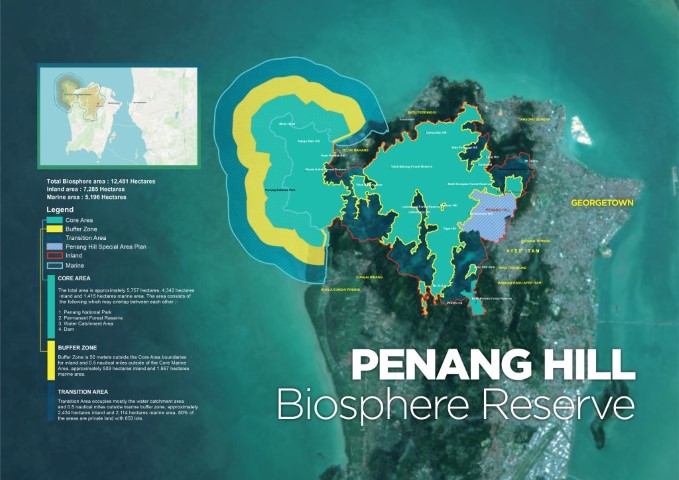
Map & Zonation
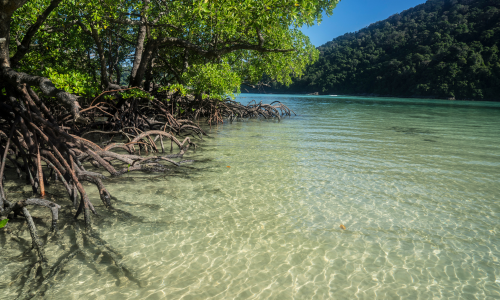
Ecosystem
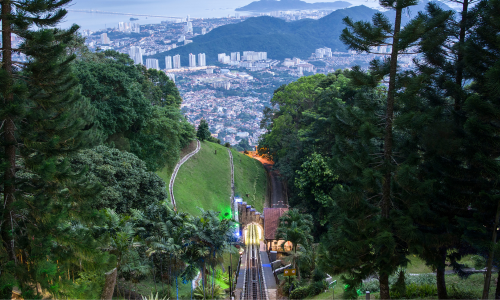
Tourist Attractions

Gallery

Partners
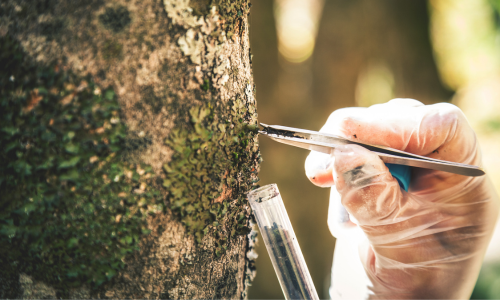
Programmes


